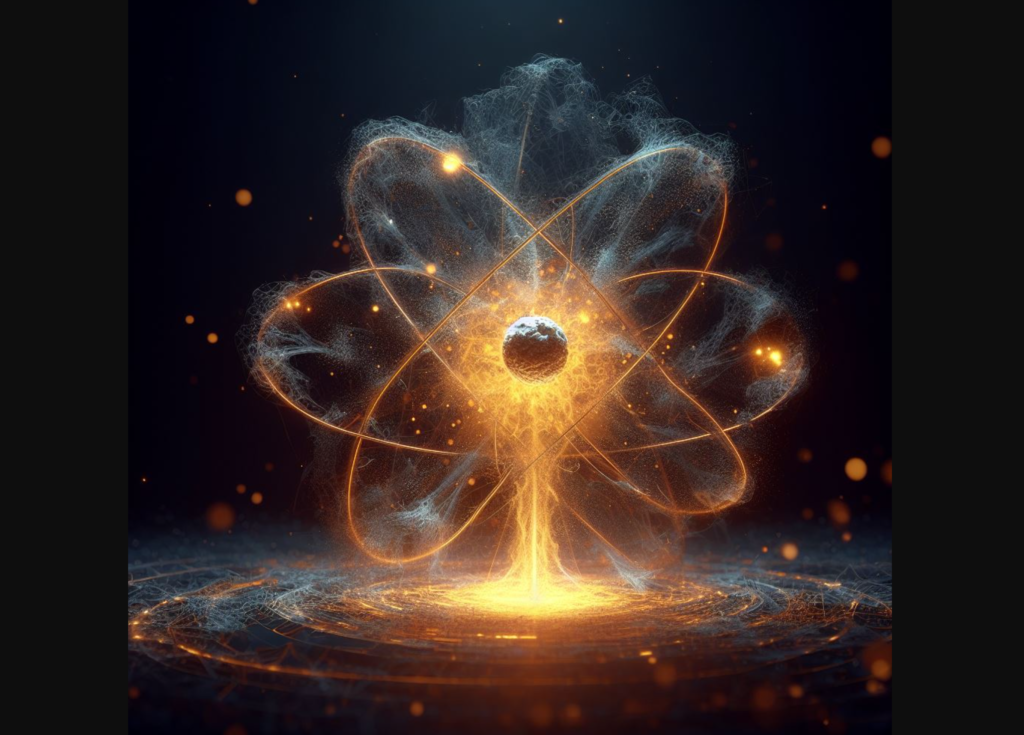When contemplating the intricate machinery of the human body, a whimsical yet profound question arises: are there nuclear reactions occurring within us? This query leads to a labyrinth of scientific exploration, delving into the realms of biochemistry, atomic physics, and the very essence of what it means to be alive. At first glance, nuclear reactions may seem confined to the grand scales of reactors and stars, but a closer examination reveals that these phenomena, albeit in a different guise, do indeed play a pivotal role in biological systems.
To unravel this enigma, it is essential to delineate the meaning of ‘nuclear reactions.’ In scientific parlance, these reactions involve changes in the nucleus of an atom, leading to the transformation of one chemical element into another or the release of energy. Such interactions are typically categorized into fission, fusion, and radioactive decay. The question then becomes whether these processes find a semblance of prominence within the confines of human physiology.
The most direct instance of nuclear reaction within the human body is encapsulated in the realm of radioactivity. Radioactive isotopes, such as carbon-14, are integral to biological systems and biological dating methods. Carbon-14, a radioactive isotope formed in the upper atmosphere, is absorbed by living organisms through carbon metabolism. When an organism dies, its uptake ceases, and the radioactive carbon-14 begins to decay at a predictable rate, providing a vital tool for archaeologists and historians in the dating of ancient biological materials. This decay, while negligible on the scale of human life, exemplifies that nuclear reactions do indeed touch the very fabric of our existence, albeit indirectly.
Moreover, radioactive decay occurs naturally and is harnessed in medical applications, particularly in the field of diagnostics and treatment. Techniques such as Positron Emission Tomography (PET) leverage the principles of nuclear decay to visualize metabolic processes within the body, assisting in the diagnosis of conditions like cancer. Here, the isotopes used emit positrons, leading to detectable gamma ray emissions, underscoring a clear interface between nuclear physics and medical science.
Yet, the concept of nuclear reactions may extend beyond mere decay. The phenomenon of fusion, where atomic nuclei combine to form a heavier nucleus, primarily occurs under extreme conditions akin to those found in stellar interiors rather than a human environment. However, a remarkable aspect of this is the principle underlying cellular respiration. The process by which cells convert glucose and oxygen into energy results in byproducts of water and carbon dioxide, showcasing an energy transformation that involves atomic interactions, yet it does not fit neatly into the typical definitions of nuclear reactions.
As one examines the atomic constituents of our body, it becomes evident that elements birthed from the stars—those forged in the crucibles of fusion within stellar cores—are intricately woven into our biological tapestry. The hydrogen found within our cells is thought to have originated from the Big Bang, while heavier elements like carbon and oxygen were synthesized in the furnaces of supernovae. In another sense, this suggests a poetic kinship with the cosmos, yet it raises an intriguing challenge: are we, in a sense, cosmic entities undergoing myriad physical transformations?
A deeper layer of complexity arises when considering the biochemical pathways crucial for sustaining life. Though these mechanisms do not involve nuclear reactions in the strictest sense, they are undergirded by atomic interactions that govern the behavior of electrons and the formation of bonds. Enzymatic reactions, which facilitate metabolic functions, hinge upon electromagnetic forces rather than nuclear forces. Nonetheless, the elegance of these pathways reveals an intricate dance of atomic particles that resonates with the principles underlying nuclear interactions.
In contemplating the energy demands of life, the role of ATP (adenosine triphosphate) cannot be overlooked. The energy currency of the cell is generated predominantly through cellular respiration, a process that leans on the conversion of chemical energy rather than nuclear energy. However, the fundamental principles of energy transformation echo the mechanisms at play in nuclear reactions, where energy yields occur following alterations in atomic structure or bonding configurations.
To further challenge our understanding, one might ponder the implications of potential nuclear reactions induced by cosmic rays. These high-energy particles perpetually bombard the Earth and, at a minute scale, interact with our biological systems. The resultant collisions can lead to the generation of secondary particles and even the transmutation of elements within the human body, although this effect is statistically insignificant compared to the vast universe of biological interactions ongoing within our cells.
In closing, while the human body does not engage in nuclear reactions in the manner typically envisaged by physicists—like those occurring in reactors or stars—it nonetheless resides in a continuum where atomic interactions weave through the tapestry of life. From the vestiges of decay that mark the passage of time to the cosmic origins of our elemental constituents, we exist within a narrative steeped in nuclear phenomena. The playful concept of nuclear reactions transpiring in our very being invites a broader contemplation of our place within the universe, prompting us to embrace a more profound understanding of the forces that mold our existence.












